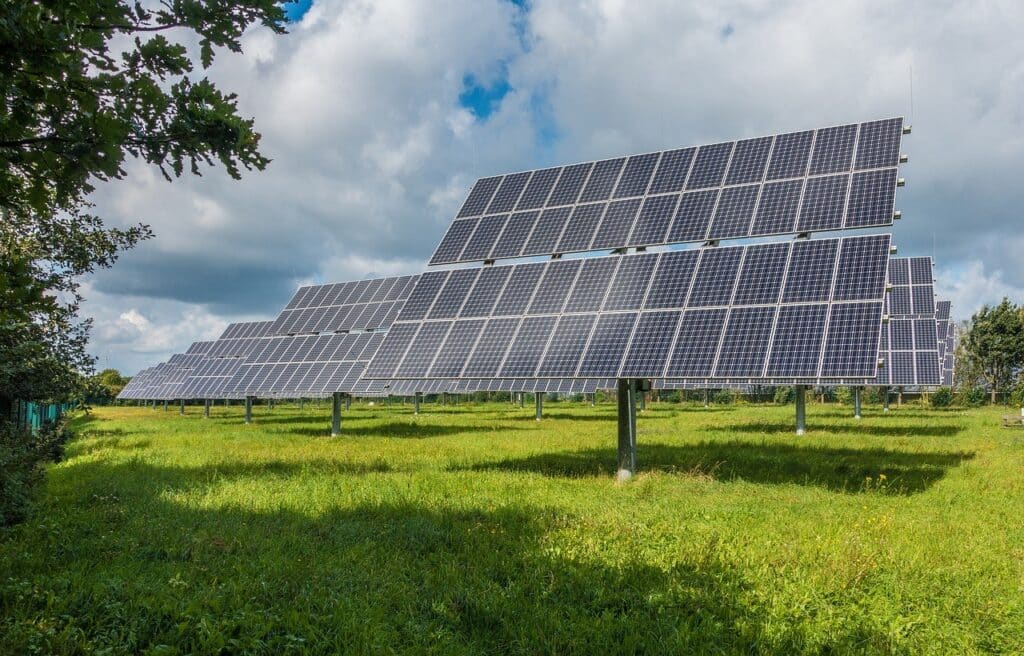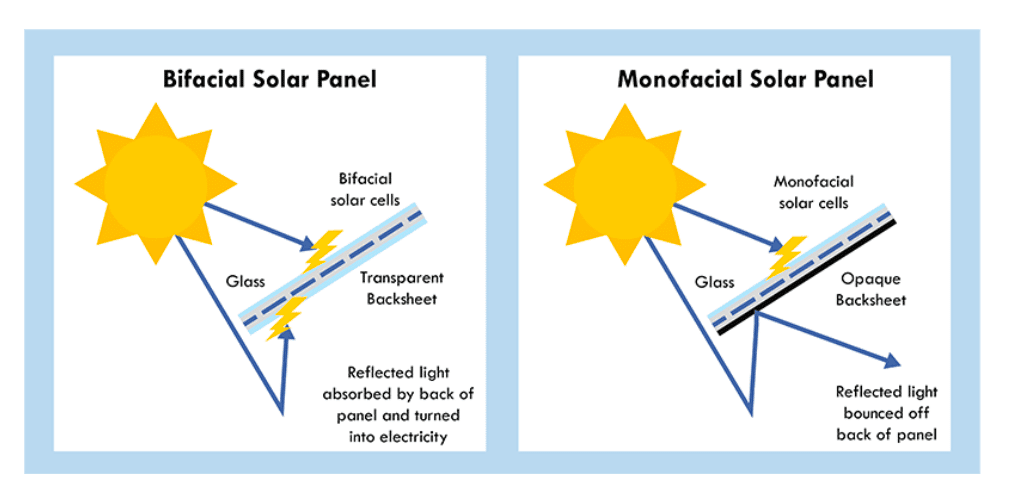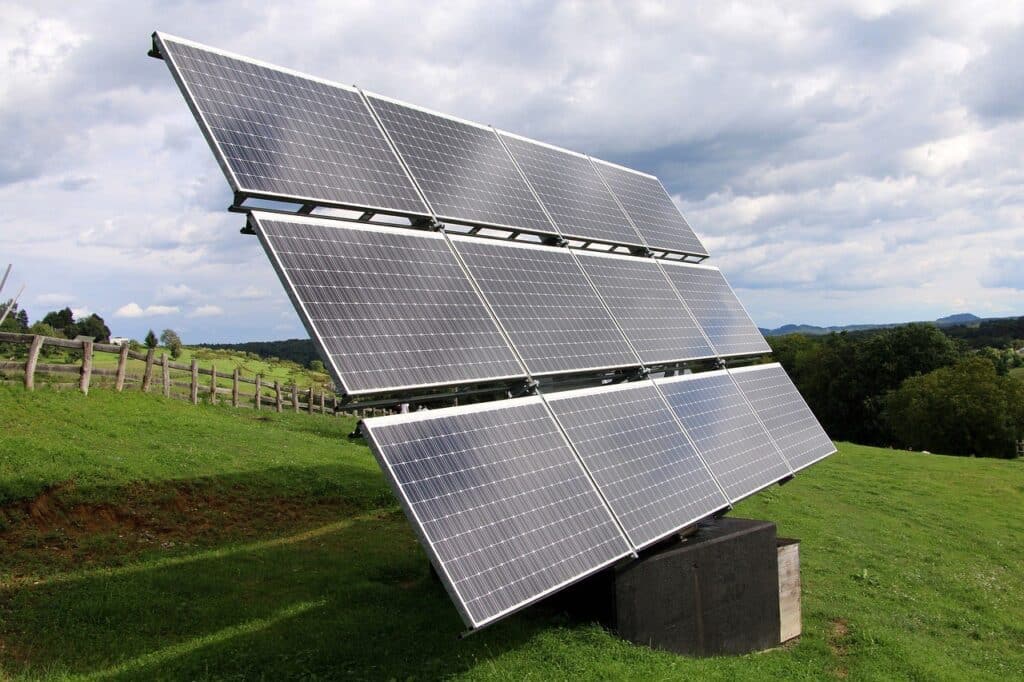When you purchase through links on our site, we may earn an affiliate commission. Here’s how it works.
Renewable sources are becoming more popular, as they are the only hope for humankind. Over the past few years, we have seen a drastic change in solar panel technologyyears.
Advanced solar technology is bringing up innovations every single day. Today, we will talk about bifacial solar modules.
This blog will briefly explain bifacial solar modules and how they work!
What are Bifacial Solar Modules?
There are two types of solar panels, or solar modules, on the market: mono-facial and bifacial.
Mono-facial solar modules are the most common type, as most people are using them.
When the sunlight hits the surface of the mono-facial solar modules, it starts generating electricity and that’s how it works.

On the other hand, these Solar Modules come with multiple resources to generate electricity. Yes, bifacial solar modules generate electricity not only from the front surface but also from the backside.
Bifacial solar modules don’t require direct sunlight. They can generate electricity from the sunshine.
The same modules can generate electricity from the reflections of the sunlight. If you put some reflecting materials underneath the area, the modules can generate electricity from their backside.
How do Bifacial Solar Modules work?
As noted above, bifacial solar panels generate electricity from both sides.
The front side of the solar panels has top solar cells that absorb direct sunlight at a specific wavelength and generate electricity.
The top solar cells on the bifacial solar module work like those on standard solar panels, which are mono-facial.
Unlike conventional solar panels, bifacial solar modules have a different panel structure at the backside.
The bifacial solar modules have special cells on the backside. These cells can also generate electricity from the reflections of direct sunlight through the ground.

To increase the power of the bifacial solar panels, you can paint the floor surface white.
The white surface is good at reflecting sunlight, unlike dark colors, which absorb it.
Unlike conventional solar panels, bifacial solar modules are installed at varying angles as per the reflection of direct sunlight through the ground.
This way, they can produce extra energy, giving you a high ROI.
Moreover, bifacial solar modules are also good at generating electricity in cloudy weather.
Solar cells are designed to generate electricity from the sun’s rays. This means they don’t require direct sunlight to do so.
They are installed at varying angles to get the maximum generation of electricity from bifacial solar modules.
This means users can adjust the angle of the structure so that the panels can absorb direct sunlight and its reflections
Unlike conventional solar panels, bifacial panels are protected with glass covers on both sides. This means they are more durable with an increased lifeline.
With conventional solar panels, you get a warranty of up to 25 years; however, with bifacial solar modules, you will get a warranty of up to 30 years.
How Bifacial Solar Modules Beneficial?
Bifacial Solar Modules are in high demand due to their ability to generate electricity from both sides. This means you can generate more electricity from the same structure.
This is the primary reason why bifacial solar modules are getting more and more popular!
The backside of the bifacial solar modules can’t generate the same electricity as the front side. So you can’t expect double generation of electricity from it.
However, it can add a few extra percentages of electricity compared to conventional solar modules. As per a recent study, with these solar modules, you can get up to 30% of extra electricity.

Since several factors can affect the production of electricity, we can’t claim the exact percentage here.
What studies show here is you will get up to 30% of extra electricity from the bifacial solar panels when you install them at the right angle.
Make sure to consider all the factors which can affect the overall production of electricity.
Bifacial Solar Panels Availability
Bifacial solar panels are not available widely as only a few manufacturers are present in the country.
As of May 2019, over 100 MW of bifacial solar panels were installed in the United States.
Since the demand for bifacial solar panels is increasing, manufacturers are coming forward to produce these panels.
It will be a little tricky to find the right installer for this specific type of solar panel. We hope to see the bifacial solar panels and their installers easier in the coming years.
Are Bifacial Solar Panels Right for My Home?
Bifacial Solar Panels were designed for big industries and are intended only for commercial purposes.
The same panels can not be installed for residential use. Yes, you can now install bifacial solar panels for residential purposes by fulfilling specific criteria set by the installers under the law.
Things to consider before installing Bifacial Solar Panels
There are certain things that you need to consider first before you can actually think of installing them. Here’s the list of things that you should check first.
- Your budget
- Your average consumption
- Required space for the installation of the panels
- Environment
You can utilize your terrace to install solar panels. You can get many benefits from installing solar panels right on your terrace area.
It doesn’t require specific space or extra arrangements. You can install them right on your terrace area.
Alternatively, you can install them on an iron shade, which you can prepare from fabrication workers.
Generally, the installers will take care of everything. You need to make the right deal with the contractor.
Bifacial Solar Panels: Pricing
Bifacial Solar Panels would cost more than conventional solar panels as they have extra benefits.
The price differences between the Mono facial and bifacial solar panels may vary from project to project.
See Also
Is Solar Energy Actually Cost-Effective?

Bifacial Solar Panels – Pricing
For big projects, conventional solar panels cost $0.01 per watt, while bifacial solar panels cost $0.05 per watt. The cost can go up to $0.20 for small projects.
Conclusion:
Before choosing the right solar panel for your home office or business, prepare a checklist of things you will be required first.
You also need to collect all the information about the technology used by solar panels, how they work, and their benefits and drawbacks.
We hope the above article clears all your doubts about bifacial solar modules and their benefits.
References: